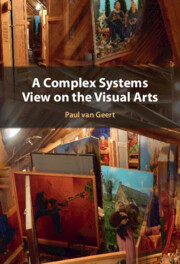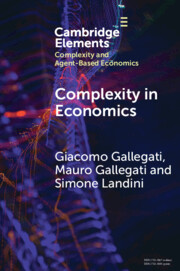Refine search
Actions for selected content:
183 results
Seed germination ecology of giant rat’s tail grasses (Sporobolus pyramidalis and Sporobolus natalensis) and herbicide options for their control
-
- Journal:
- Invasive Plant Science and Management / Volume 18 / 2025
- Published online by Cambridge University Press:
- 06 October 2025, e27
-
- Article
-
- You have access
- Open access
- HTML
- Export citation
Beyond 3D tic-tac-toe: from O to ball and X to boX
-
- Journal:
- Proceedings of the Design Society / Volume 5 / August 2025
- Published online by Cambridge University Press:
- 27 August 2025, pp. 721-730
-
- Article
-
- You have access
- Open access
- HTML
- Export citation
Seed germination ecology of eclipta (Eclipta prostrata) in dry direct-seeded rice fields from China
-
- Journal:
- Weed Science / Volume 73 / Issue 1 / 2025
- Published online by Cambridge University Press:
- 22 August 2025, e71
-
- Article
-
- You have access
- Open access
- HTML
- Export citation
Syntactically Independent Exclamative zu-Infinitives in Modern Standard German: Diachrony and Cross-linguistic Comparison
-
- Journal:
- Journal of Germanic Linguistics / Volume 37 / Issue 2 / June 2025
- Published online by Cambridge University Press:
- 09 June 2025, pp. 221-249
-
- Article
- Export citation
It’s (Not) Just Semantics: “Neurotechnology” as a Novel Space of Transnational Law
-
- Journal:
- Law & Social Inquiry / Volume 50 / Issue 3 / August 2025
- Published online by Cambridge University Press:
- 28 May 2025, pp. 865-892
- Print publication:
- August 2025
-
- Article
-
- You have access
- Open access
- HTML
- Export citation
Chapter 3 - From Processes to Complex Dynamic Systems
- from Part I - Art as a Complex Process
-
- Book:
- A Complex Systems View on the Visual Arts
- Published online:
- 20 March 2025
- Print publication:
- 03 April 2025, pp 42-72
-
- Chapter
- Export citation
Chapter 4 - Describing Art Through the Lens of Complex Dynamic Systems
- from Part I - Art as a Complex Process
-
- Book:
- A Complex Systems View on the Visual Arts
- Published online:
- 20 March 2025
- Print publication:
- 03 April 2025, pp 73-92
-
- Chapter
- Export citation
Chapter 6 - Timescales of Art as Interacting Processes
- from Part II - Entangled Timescales of Visual Arts
-
- Book:
- A Complex Systems View on the Visual Arts
- Published online:
- 20 March 2025
- Print publication:
- 03 April 2025, pp 115-117
-
- Chapter
- Export citation
Emergence and persistence of volunteer hemp in southern Florida
-
- Journal:
- Invasive Plant Science and Management / Volume 18 / 2025
- Published online by Cambridge University Press:
- 31 March 2025, e19
-
- Article
-
- You have access
- Open access
- HTML
- Export citation

A Complex Systems View on the Visual Arts
-
- Published online:
- 20 March 2025
- Print publication:
- 03 April 2025

Reduction, Emergence and the Metaphysics in Science
-
- Published online:
- 18 February 2025
- Print publication:
- 20 March 2025
-
- Element
- Export citation
Dismantling pervasive gender stereotypes in healthcare leadership contexts with an ecological systems theory approach
-
- Journal:
- Journal of Management & Organization / Volume 30 / Issue 6 / November 2024
- Published online by Cambridge University Press:
- 28 January 2025, pp. 2223-2254
-
- Article
-
- You have access
- Open access
- HTML
- Export citation

Complexity in Economics
-
- Published online:
- 02 December 2024
- Print publication:
- 02 January 2025
-
- Element
- Export citation
3 - What Makes Sociological Experiments Different from Other Experiments?
- from Part I - The Philosophy and Methodology of Experimentation in Sociology
-
- Book:
- Experimental Sociology
- Published online:
- 23 November 2024
- Print publication:
- 21 November 2024, pp 29-39
-
- Chapter
- Export citation
EMBED IN ENSEMBLE TO RIGOROUSLY AND ACCURATELY HOMOGENIZE QUASI-PERIODIC MULTI-SCALE HETEROGENEOUS MATERIAL
- Part of
-
- Journal:
- The ANZIAM Journal / Volume 66 / Issue 1 / January 2024
- Published online by Cambridge University Press:
- 19 September 2024, pp. 1-34
-
- Article
-
- You have access
- Open access
- HTML
- Export citation
Chapter 1 - The Evolving Complexity Theory of Talent Development
-
- Book:
- The Nature and Nurture of Talent
- Published online:
- 20 June 2024
- Print publication:
- 27 June 2024, pp 15-33
-
- Chapter
- Export citation
Chapter 10 - Collaborative Competence during Early Elementary Playful Learning Activities
- from Part III - A New Theory and Method for Assessing Development via Collaborative Competence
-
- Book:
- Developing Together
- Published online:
- 07 May 2024
- Print publication:
- 09 May 2024, pp 177-206
-
- Chapter
- Export citation
How far does culture go?
-
- Journal:
- Archaeological Dialogues / Volume 30 / Issue 2 / December 2023
- Published online by Cambridge University Press:
- 03 May 2024, pp. 163-167
-
- Article
-
- You have access
- Open access
- HTML
- Export citation
8 - Language and Evolution
-
- Book:
- The Philosophy of Theoretical Linguistics
- Published online:
- 25 April 2024
- Print publication:
- 02 May 2024, pp 183-204
-
- Chapter
- Export citation
Control of multiple-herbicide-resistant waterhemp with acetochlor-based herbicide mixtures in soybean
-
- Journal:
- Weed Technology / Volume 38 / 2024
- Published online by Cambridge University Press:
- 01 April 2024, e32
-
- Article
-
- You have access
- Open access
- HTML
- Export citation
